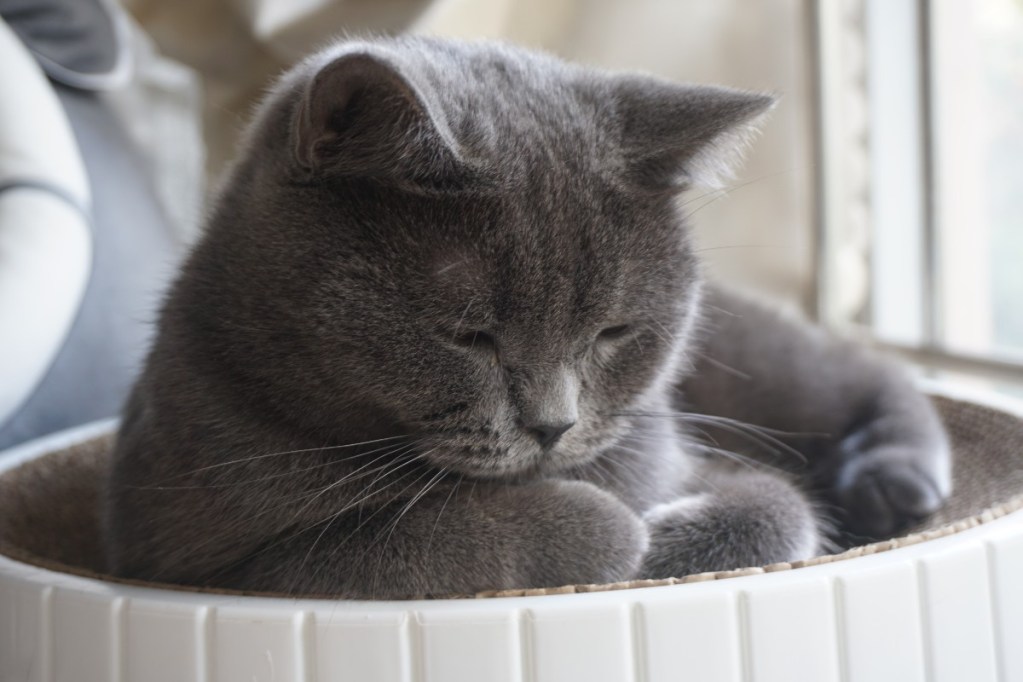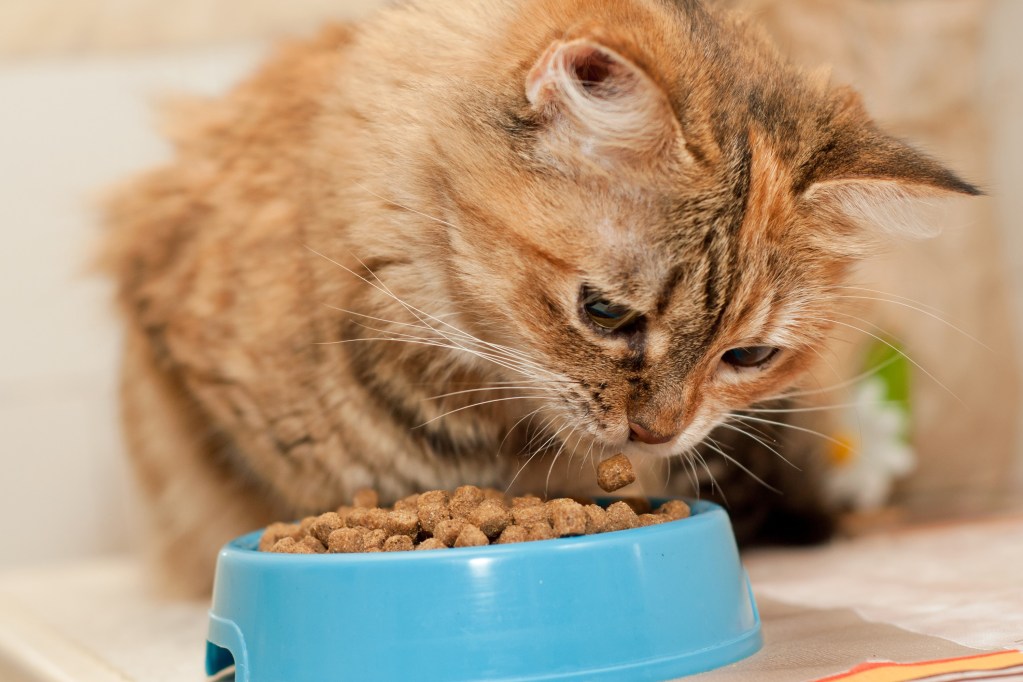UTIs are a common and pesky condition in humans. It’s short for urinary tract infection. A UTI is an infection of a part of the urinary system, like the bladder, kidneys, or urethra, as the name implies. UTIs can involve painful burning sensations when peeing. They affect about 10 out of 25 women and 3 out of 25 men at least once, according to the Urology Care Foundation.
Cat parents may wonder: What is the rate of urinary tract infections in cats? Unfortunately, it’s not zero. Cats can get UTIs. The good news is that cat health experts don’t commonly see the issue when treating felines. However, it’s still good to think about the urinary tract when approaching your cat’s health.
Here’s what to know about UTIs in cats, including the best cat food for urinary health.

How common are urinary tract infections in cats?
Not very. Urinary tract problems are common cat health issues, but UTIs are rarely one of them. Still, it is possible for your cat to get a UTI.
In cats, UTIs are one of the various diseases referred to as feline lower urinary tract diseases (FLUTD). The condition is an umbrella term to describe conditions affecting the bladder and urethra in cats. Other diseases include urinary stones and urethral obstruction.
What causes UTIs in cats? Typically, kitties develop UTIs when bacteria get into the urethra and move to the bladder. In the bladder, where urine is supposed to remain sterile, the bacteria grow and multiply, triggering a UTI. In some cases, bladder stones can form whether a UTI develops or not.
Cats 10 years old or older with an endocrine disease, such as diabetes, are more likely to develop a UTI.
What are the common symptoms of UTIs in cats?
A telltale sign that something is up with your cat is if they start peeing outside the litter box. This symptom may not signal a UTI (stress, life changes, and other conditions can also cause the cat to stop using their box), but it should prompt a call to the vet. It’s also probably stressful for you as a cat parent, which is understandable. You love your feline and likely don’t want to have to clean urine off your furniture or walls. For the sake of your cat’s health and your relationship, get the vet on the line to schedule a checkup.
Other signs your cat may have a UTI include:
- Reduced urination
- Signs that it’s painful for your cat to pee, such as crying, whining, or straining
- Blood in urine
- More frequent trips to the litter box to try to urinate
- Increased licking around the anus or genital area
How are UTIs in cats diagnosed and treated?
The symptoms of various FLUTDs are similar, so you’ll want to call your vet if you suspect your furry companion may have a UTI to allow them to rule everything else out and make a proper diagnosis. Just like a human, a cat will submit to a urinalysis (or pee test) to diagnose a UTI. The vet will look for several issues, including UTI, elevated glucose (a sign of diabetes), and protein, to rule out multiple conditions.
The veterinarian will send the sample to the lab unless they have the necessary materials to analyze the urine on-site and call you with the results. Luckily, UTIs in cats are treatable with antibiotics. Only a vet can prescribe the appropriate antibiotic and dosing for your cat.

How can I prevent a UTI in my cat?
No one wants to see their kitty in pain. If you’ve ever had a UTI, you know they’re no fun. Of course, you want to protect your cat from one. Is there a definitive best food for cat urinary health? What are the other steps you can take? Here’s what to know.
Diet
The best cat food for urinary health is actually a regular AAFCO-approved option. Why? Because prevention is the best medicine. Feeding your cat appropriately portioned, nutritious food can keep them healthy and lower the risk of developing conditions like diabetes, which increases their UTI risk. However, your vet can prescribe specialized food if your four-legged friend has a urinary disease. Consider your pet’s doctor your top resource to find the best food for cat urinary health for your specific animal.
Keep kitty hydrated
In premenopausal women, drinking water frequently can reduce the risk of a UTI, according to research. Though this tip hasn’t been proven to lower a cat’s chances of developing a UTI, the American Veterinary Medicine Association (AVMA) still recommends it as a way to prevent FLUTD.
Follow litter box best practices
Have multiple litter boxes (and at least one per cat) around the house, and be sure to clean them once per day to minimize the chances bacteria enter your cat’s body. Swap out litter at least once per week or as needed.
UTIs are an uncommon cat health condition, but felines can develop them. They’re a result of bacteria getting into the bladder through the urethra. Vets can diagnose UTIs in cats through a urinalysis. Age and underlying conditions like diabetes put your kitty at an increased risk for a UTI. Urinary tract infections in cats are treatable with an antibiotic. A vet can prescribe it and give you directions on dosing. One of the most common UTI symptoms is urinating outside of the litter box. However, this red flag could be the sign of several issues, so your best bet is to call the veterinarian.




